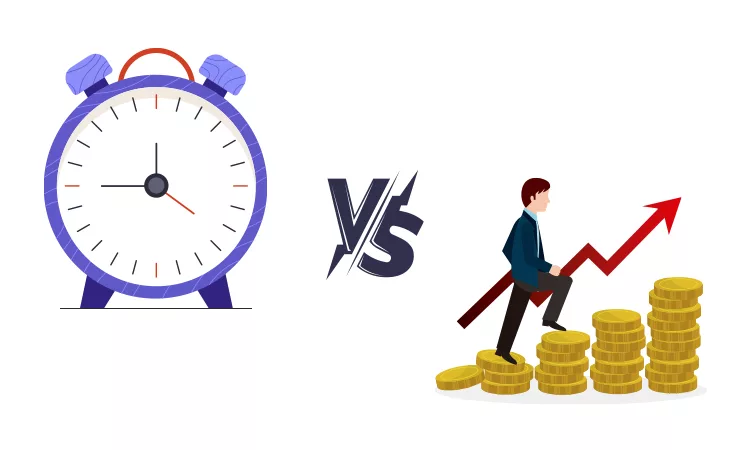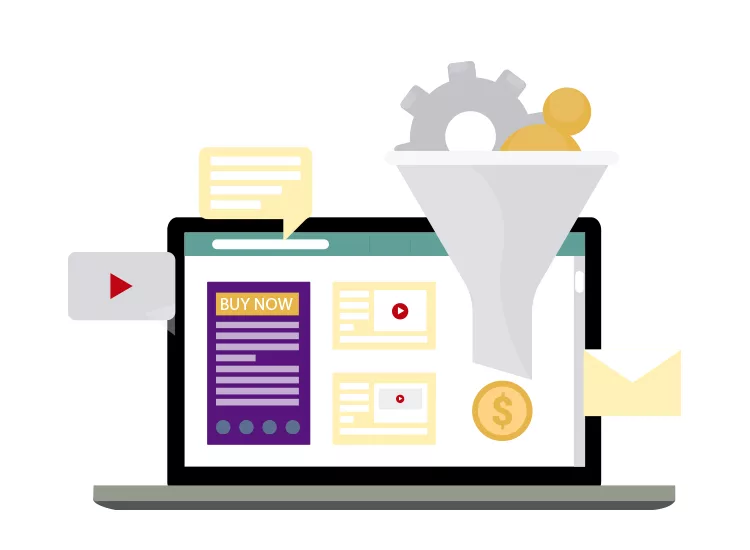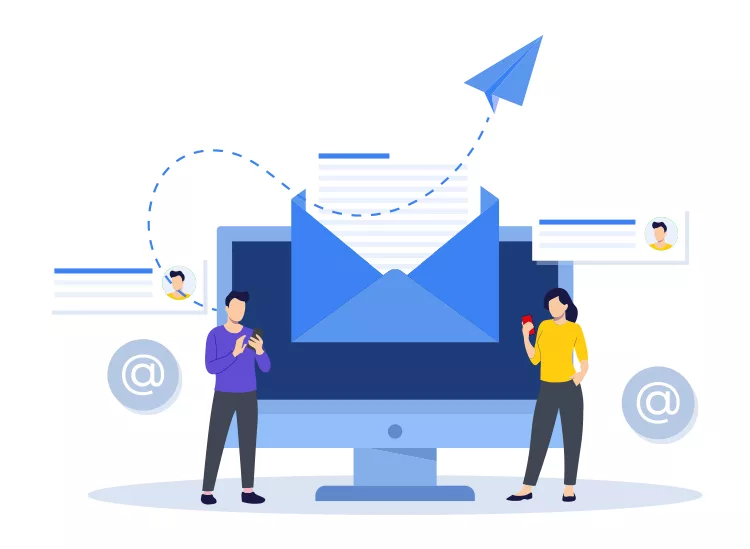Our view at Stack - ClickFunnels was founded by an online marketing legend Russell Brunson and it offers several benefits for online businesses and marketers:
- Time and Cost Savings: Efficiently create sales funnels without extensive development efforts.
- Maximized Conversions: Test offers, copy, and images to enhance conversions.
- Specific Landing Pages: Generate highly targeted landing pages.
- Predictable Pipeline: Create consistent, predictable sales paths.
- Increased Sales: On average, it boosts sales of lesser products by 15%
The post How to Pick the Best Digital Tools for Your New Business appeared first on ClickFunnels.
Every entrepreneur needs to build a software stack for their business.
That’s why today we are going to discuss how to choose the right digital tools for your startup…
- The Time vs. Money Trade-Off
- Avoid Premature Optimization
- What is Your Software Budget?
- What Functionalities Do You Need?
- Specialized Apps vs. All-in-One Marketing Platforms
- Grow Your Startup With ClickFunnels!
The Time vs. Money Trade-Off

There’s a trade-off between time and money:
You can either spend more time and less money or you can spend less time and more money on completing any given task.
For example, you don’t need to pay for a website builder in order to create a website for your startup – you can simply code everything from scratch.
Of course, that is going to take time, especially if you don’t have any previous web development experience.
Generally speaking, if you just launched your startup, you want to be as scrappy as possible, so the more stuff you can do yourself, the better.
However, you also need to remember that time is a limited resource and there’s an opportunity cost to how you choose to spend it.
As a founder, your top priority should be getting paying customers, so if investing in software can help you free up time for that, then you should probably do it if your budget allows it.
Say, if you can afford to pay for a website builder, then it probably makes sense to use one and set up your website in an hour or two instead of spending an entire day or maybe even several days coding one from scratch.
Ultimately, when it comes to resource allocation, it’s an individual decision that is going to depend on what you have more: time or money.
As our friend Alex Hormozi loves to say, the first rule of entrepreneurship is “use what you have”
So look at the resources at your disposal and figure out how to best leverage them to grow your startup!
Avoid Premature Optimization

“Premature optimization is the root of all evil” is a quote that is famous among software engineers.
It comes from Donald Knuth’s legendary multi-volume work “The Art of Computer Programming.”
“The real problem is that programmers have spent far too much time worrying about efficiency in the wrong places and at the wrong times; premature optimization is the root of all evil (or at least most of it) in programming.”
We would argue that startup founders also have a tendency to fall into this trap, which can get in the way of business success.
If you want to get your startup off the ground, you need to be prepared to do things that don’t scale, the most important of which is getting out there and acquiring users manually by any means necessary.
However, that will inevitably involve dealing with a ton of rejection so you might start procrastinating on it by focusing on various tasks that are less important but more comfortable.
Premature optimization is one of the ways in which procrastination can manifest: it’s easy to trick yourself into thinking that you are being productive when in reality you are just wasting time attempting to solve problems that don’t even exist yet.
For example, you might start agonizing over building a perfect software stack, automating various business processes, making sure that your startup infrastructure can scale, etc. That might feel productive but it’s likely a waste of time.
So forget about optimizing stuff, put together a system that works for the stage you are at and start focusing on what actually matters: persuading your dream customers to pay for your product.
As your startup grows, you’ll start hitting various bottlenecks, at which point you can begin streamlining your workflow based on real data.
What is Your Software Budget?

Your budget is going to be your main constraint when choosing digital tools for your startup.
That’s why you need to get clear on how much money you can afford to spend on business software.
Typically, B2B apps use a SaaS model where you pay a monthly subscription to get access to them, so it makes sense to think in terms of monthly expenditure.
Most of those apps offer substantial discounts for users who choose to pay annually but we don’t recommend going that route until you are sure that you like the software in question.
However, once you are happy with your software stack, renewing your subscriptions on an annual basis might make sense and can enable you to get the same functionalities for less money.
What Functionalities Do You Need?
You want to make a list of must-have functionalities that you are going to need to run your business.
Here are some suggestions:
Website Builder Functionality

Every startup needs a business website.
As we already discussed, while you can code one from scratch yourself, it probably makes sense to use a website builder instead.
Website builders typically come with template libraries full of beautiful website templates and include drag-and-drop visual editors that you can use to customize those templates.
There are also AI website builders that can generate an entire website for you in a matter of minutes based on a text prompt that describes what you have in mind!
Funnel Builder Functionality

A sales funnel is a system for converting visitors into leads, leads into customers, and customers into repeat customers.
If you want to grow your startup as quickly as possible, the best way to do that is to build a sales funnel for your product and then drive traffic to it.
Just like with your website, you can code your entire sales funnel from scratch yourself, but it probably makes more sense to use a funnel builder instead.
Typically, funnel builders come with a template library that features the most common sales funnel templates and provides a drag-and-drop page builder that you can use to customize those templates.
Note that page design is extremely important when it comes to landing page and sales page conversion rates.
Consequently, it’s best to use page templates that have been proven to work instead of getting creative yourself, assuming that your top priority is acquiring users!
Email Marketing Functionality

An engaged email list is one of the most valuable assets that a startup can have.
That’s why you will need an email marketing functionality that enables you to collect email addresses through opt-in forms, set up a welcome sequence, and send one-off broadcast emails to your subscribers.
You might also want some more advanced features such as list segmentation, automated workflows, and A/B testing.
Email Warm-Up Functionality

We would argue that cold email is the best way to acquire users in the early stages if you can’t afford to pay for ads.
However, if you start sending cold emails from your main email account, you risk getting flagged as a spammer and being blacklisted by email service providers such as Gmail.
Moreover, if that email account is associated with your company’s domain name, email service providers might blacklist not just your email address but all email addresses associated with that domain.
That’s why it’s best to create a new email account specifically for the purpose of cold email. But you can’t just go from zero to sending 100 emails per day. You need to warm up your account first.
Email warm-up tools simulate regular back-and-forth messaging between your new email account and various established email accounts, which sends a signal to email service providers that you are a normal person and not a spammer.
Typically, it takes a few weeks to warm up a new email account, but if you want to err on the side of caution, you can wait for a month before you start your cold email campaign.
Also, you still shouldn’t go from zero to 100 cold emails per day even once you warm up your email account.
Start with just 10 cold emails and increase the quantity gradually by adding 10 more every day until you get to 100 cold emails per day!
Cold Email Management Functionality

When you start your cold email campaign, you might be able to keep track of everything with a simple spreadsheet at first.
However, as you continue increasing the number of emails that you send, you will probably find yourself in need of cold email management software, especially once you begin getting responses from potential clients!
Customer Relationship Management Functionality

If you decide to go the cold email route, you will also need a customer relationship management (CRM) functionality.
The core CRM feature is the sales pipeline overview that allows you to see everything in one place.
On top of that, you might want additional features such as:
- An appointment booking calendar that enables potential customers to book appointments with you without the need for email back and forth.
- Automated appointment reminders that can help ensure that everyone shows up at an agreed time.
- A contact database where you can store notes on each lead and then easily look up those notes before getting on a call with them.
Customer Support Functionality

While providing excellent customer support remains important throughout the entire business lifecycle, it’s absolutely essential for early-stage startups. Why?
Because if you just launched your company, it doesn’t have any momentum yet, acquiring users is an uphill struggle and your user base is so small that a few customers churning can have a noticeable impact on your revenue.
Moreover, your brand reputation is extremely fragile, which means that negative publicity and bad customer reviews can have a disproportionate impact on it.
Finally, if you are acquiring users manually by cold emailing them and then getting on calls with them, the relationships you have with these customers are going to be more personal.
That’s something that you need to keep in mind when it comes to customer support: if they don’t get a quick response from you when they need help, they will be more likely to get upset about it.
All this means that you need to be prepared to go above and beyond with customer support if you want to retain users.
It’s probably best to provide support both via email and via live chat on your website. Ideally, you want to set up notifications so that you’d get notified of new support tickets and could respond to these queries immediately!
A/B Testing Functionality

A/B testing, also known as split testing, is a conversion rate optimization method that works like this:
- You create two versions of something that are identical except for the element that you are testing.
- You drive the same amount of traffic to both versions.
- You keep the version that converted better.
For Example:
You can create two versions of your lead magnet landing page that are identical except for the headline, drive the same amount of traffic to both of them, and then keep the headline that converted better.
Founders often get stuck in analysis paralysis and waste an enormous amount of time deliberating over various design, copy, and product decisions.
What we recommend doing instead is getting into a habit of running A/B tests, looking at the results, and making adjustments based on those results.
After all, why agonize over something like the call-to-action button color when you can simply run an experiment to see which color works best?
Business Analytics Functionality

You want to have analytics in place right from the get-go so that you can start accumulating data as early as possible.
Here are some of the metrics that you should be tracking:
- Traffic sources and unique visitors
- Visitor-to-lead conversion rate
- Lead-to-customer conversion rate
- Customer-to-repeat-customer conversion rate
- Sales, revenue, and profit margins
- Cancellations and churn rate
- Gross profit and net profit
- Month-over-month growth
Ideally, you want to use an analytics functionality that not only allows you to track and analyze business data but also enables you to run simulations and create future projections based on it.
Specialized Apps vs. All-in-One Marketing Platforms
You have two options when it comes to building your software stack:
- Pay separately for a bunch of specialized apps and then use integrations to create a business workflow.
- Pay for an all-in-one marketing platform and get everything or at least most of what you need in one place.
Let’s take a look at the pros and cons of each option:
Specialized App Pros and Cons
Generally speaking, specialized apps tend to be better than all-in-one platforms when it comes to the functionalities that they focus on.
For example, a specialized email marketing app will probably offer better email marketing functionality than an all-in-one platform, which shouldn’t be surprising.
Consequently, if you pay for a bunch of different apps, the overall software quality will likely be higher than what you’d get from an all-in-one platform.
However, getting all those specialized apps to play nicely with each other so that you can build a business workflow can prove to be quite a challenge.
Moreover, you can expect constant technical problems with this approach because there are so many moving parts.
For example, your email marketing app might get an update that breaks its integration with your funnel builder, and the next thing you know your sales funnel isn’t working.
Finally, when these technical issues occur, it can be hard to get them fixed because there’s often more than one company involved.
Say, if your email marketing app update breaks its integration with your funnel builder, you might have to deal with customer support at both companies. Who is supposed to fix this situation?
All this may not seem like a big deal right now but consider that the larger your business grows, the more these technical issues are going to cost you in lost revenue!
All-in-One Marketing Platform Pros and Cons
Generally speaking, all-in-one marketing platforms are not as great as specialized apps when it comes to any particular functionality.
However, since you are getting all or at least most of the functionalities that you need in one place, it’s much easier to set everything up.
Moreover, since there are fewer moving parts, you won’t have to deal with annoying technical problems as often.
And when such problems do arise, they are much easier to fix because you are only dealing with one company.
Of course, if you add a few specialized apps to your workflow on top of the all-in-one marketing platform, that is going to make things more complicated.
However, that’s still a much simpler and more robust setup than using a different app for every functionality that you need!
Grow Your Startup With ClickFunnels!
What is ClickFunnels?
ClickFunnels is an all-in-one marketing platform that has everything you need to launch, manage, and grow your online business!
What are ClickFunnels’ Most Notable Features?
ClickFunnels’ most notable features include:
- A website builder functionality
- A funnel builder functionality
- An email marketing functionality
- A customer relationship management functionality
- An A/B testing functionality
- A business analytics functionality
As you can see, our software provides most of the functionalities that we discussed in this article!
How Much Does ClickFunnels Cost?
ClickFunnels has two pricing plans:
- The Startup plan costs $97/month – It includes unlimited funnels, courses, members, contacts, pages, and domains. You can have 3 workspaces and 3 team members.
- The Pro plan costs $297/month – It includes unlimited funnels, courses, members, contacts, pages, and domains. You can have 10 workspaces and 10 team members.
Both plans have a free 14-day trial.
By the way, if you decide that you like our software, make sure to check out our annual subscriptions. You can save money by paying yearly!

Try ClickFunnels Risk-Free!
Let’s be real:
We are biased in favor of our software.
So we understand if you take what we say about it with a grain of salt.
Fortunately, we have a free 14-day trial, so you don’t have to take our word for it.
You can go and see ClickFunnels for yourself without any risk!
So what are you waiting for? 🧐
Start Your Free Trial Today
Thanks for reading How to Pick the Best Digital Tools for Your New Business which appeared first on ClickFunnels.
If Click Funnels is of interest and you'd like more information, please do make contact or take a look in more detail here.
Credit: Original article published here.
